#POISONOUS PLANTS
Text
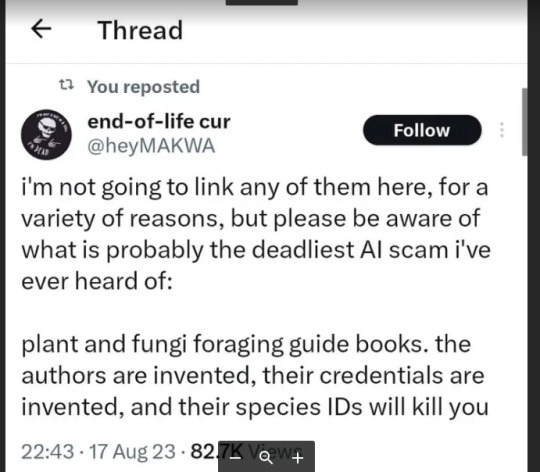
ETA: I wrote up a guide on clues that a foraging book was written by AI here!
[Original Tweet source here.]
[RANT AHEAD]
Okay, yeah. This is a very, very, very bad idea. I understand that there is a certain flavor of techbro who has ABSOLUTELY zero problem with this because "AI is the future, bro", and we're supposed to be reading their articles on how to use AI for side hustles and all that.
I get that ID apps have played into people's tendency to want quick and easy answers to everything (I'm not totally opposed to apps, but please read about how an app does not a Master Naturalist make.) But nature identification is serious stuff, ESPECIALLY when you are trying to identify whether something is safe to eat, handle, etc. You have to be absolutely, completely, 100000% sure of your ID, and then you ALSO have to absolutely verify that it is safely handled and consumed by humans.
As a foraging instructor, I cannot emphasize this enough. My classes, which are intended for a general audience, are very heavy on identification skills for this very reason. I have had (a small subsection of) students complain that I wasn't just spending 2-3 hours listing off bunches of edible plants and fungi, and honestly? They can complain all they want. I am doing MY due diligence to make very sure that the people who take my classes are prepared to go out and start identifying species and then figure out their edibility or lack thereof.
Because it isn't enough to be able to say "Oh, that's a dandelion, and I think this might be an oyster mushroom." It's also not enough to say "Well, such-and-such app says this is Queen Anne's lace and not poison hemlock." You HAVE to have incredibly keen observational skills. You HAVE to be patient enough to take thorough observations and run them through multiple forms of verification (field guides, websites, apps, other foragers/naturalists) to make sure you have a rock-solid identification. And then you ALSO have to be willing to read through multiple sources (NOT just Wikipedia) to determine whether that species is safely consumed by humans, and if so if it needs to be prepared in a particular way or if there are inedible/toxic parts that need to be removed.
AND--this phenomenon of AI-generated crapola emphasizes the fact that in addition to all of the above, you HAVE to have critical thinking skills when it comes to assessing your sources. Just because something is printed on a page doesn't mean it's true. You need to look at the quality of the information being presented. You need to look at the author's sources. You need to compare what this person is saying to other books and resources out there, and make sure there's a consensus.
You also need to look at the author themselves and make absolutely sure they are a real person. Find their website. Find their bio. Find their social media. Find any other manners in which they interact with the world, ESPECIALLY outside of the internet. Contact them. Ask questions. Don't be a jerk about it, because we're just people, but do at least make sure that a book you're interested in buying is by a real person. I guarantee you those of us who are serious about teaching this stuff and who are internet-savvy are going to make it very easy to find who we are (within reason), what we're doing, and why.
Because the OP in that Tweet is absolutely right--people are going to get seriously ill or dead if they try using AI-generated field guides. We have such a wealth of information, both on paper/pixels and in the brains of active, experienced foragers, that we can easily learn from the mistakes of people in the past who got poisoned, and avoid their fate. But it does mean that you MUST have the will and ability to be impeccably thorough in your research--and when in doubt, throw it out.
My inbox is always open. I'm easier caught via email than here, but I will answer. You can always ask me stuff about foraging, about nature identification, etc. And if there's a foraging instructor/author/etc. with a website, chances are they're also going to be more than willing to answer questions. I am happy to direct you to online groups on Facebook and elsewhere where you have a whole slew of people to compare notes with. I want people's foraging to be SAFE and FUN. And AI-generated books aren't the way to make that happen.
#foraging#mushroom foraging#plant foraging#mushrooms#edible plants#edible mushrooms#wild foods#food#nature#AI#fungus#fungi#poisonous mushrooms#poisonous plants#botany#mycology#rant
4K notes
·
View notes
Text
All poisonous plants were renamed trust-me-nots and all plants with thorns were named touch-me-nots and the mimosa pudica was renamed introverts.
940 notes
·
View notes
Text
Wild rabbits eat belladonna on purpose as self-defense to poison predators. Wild rabbits who live in the same areas as belladonna’s natural growing range are immune to belladonna’s deadly alkaloids because they produce an enzyme called atropinesterase that breaks down the atropine in the belladonna they ingest. The darker the rabbit’s fur, the more poisonous it may be.
Source
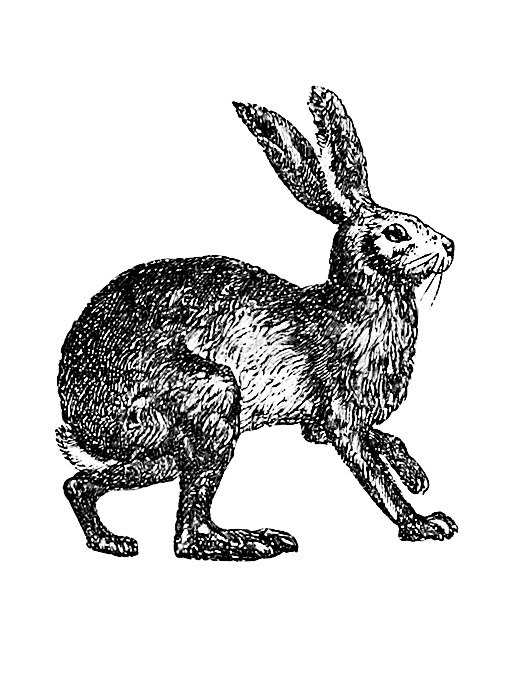

1K notes
·
View notes
Text

Colchicum autumnale
578 notes
·
View notes
Text
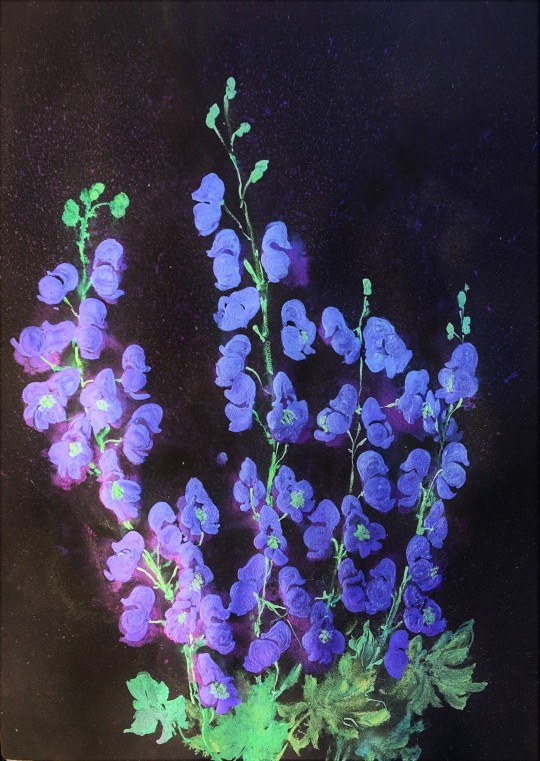
Denizens Of The Darkness
Watercolor On Black Paper
2022, 22"x 30"
Monkshood, Aconite, Aconitum
#art#nature#flowers#plants#artwork#artists on tumblr#watercolor#floral#painting#minimalism#artblr#botany#artist#creatrs#purple#aconitum#aconite#monkshood#poisonous plants#wolfsbane#wolf's bane#botanical#plant#plantblr#witchy#garden witch#goth cottagecore#contemporary art#cottagecore
431 notes
·
View notes
Text
Humans, shown a plant with enough poison to kill any other sentient species: finally, some good fucking food
#humans are space orcs#humans are space oddities#humans are weird#humans are space fae#humans are space australians#humans are deathworlders#poisonous plants#*cough* spicy food *cough*#alien: human what is that you’re eating#human: *chewing faster*#alien: HUMAN NO—
5K notes
·
View notes
Text
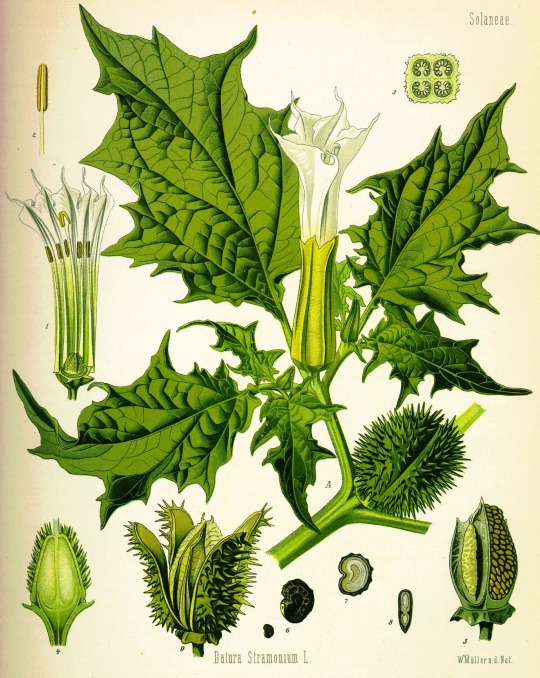

DATURA (D. STRAMONIUM) ☠️🥀
Datura is a genus of nine species of poisonous flowering plants belonging to the family Solanaceae. Datura is known as powerful and dangerous deliriants, used for shamanic and medical purposes, as well as poisons. They contain the potent anticholinergic substances scopolamine, hyoscyamine, and atropine primarily in their seeds and flowers. The reported effects post-ingestion have been commonly reported as states of psychotic delirium, longterm amnesia—and oftentimes results in fatality.
301 notes
·
View notes
Text

Datura Stramonium (devil's snare).
Illustration taken from 'Köhler's Medizinal-Pflanzen.'
Published 1883.
Missouri Botanical Garden.
archive.org
241 notes
·
View notes
Text
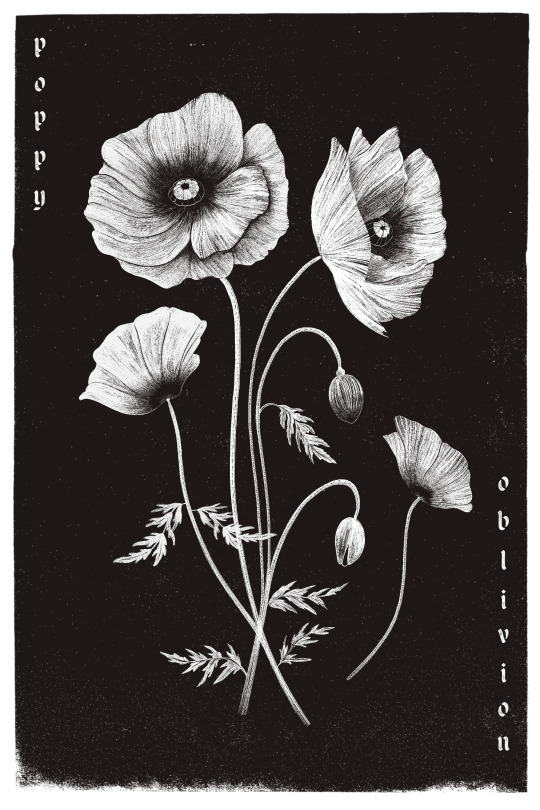
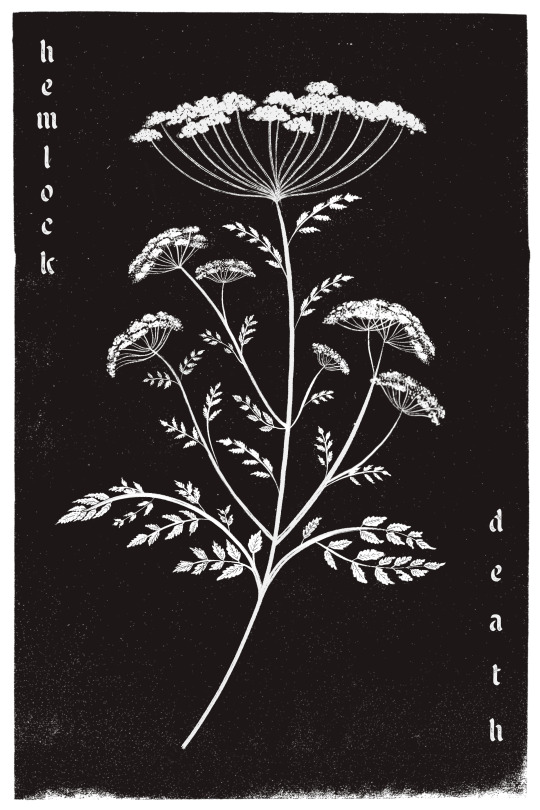

Language of Flowers (2022) | Prints
#art#illustration#poppy#hemlock#foxglove#language of flowers#poisonous plants#goth#gothic#gothic art#monochrome#black and white#witch aesthetic
2K notes
·
View notes
Text

Belladonna Cyanotypes
Based on my linocut design.
(Available here)
#illustration#artists on tumblr#traditional art#cyanotype#printmaking#belladonna#original art#vintage art#prints for sale#sunprint#botanical art#goblincore#mrokat#magic art#witchy aesthetic#witchy art#poisonous plants#toxic plants#plant print
161 notes
·
View notes
Text

Framed Lily of the Valley, handmade by yours truly.
#soliloquyjewelry#soliloquy jewelry#lily of the valley#poisonous plants#green velvet#victorian#victorian style#victorian inspired#witch decor#cottage witch#goblincore#witchcore#herb witch#plant witch
838 notes
·
View notes
Note
hey there! fellow naturalist (albeit less experienced!) here! in regards to the AI-generated ID guides, do you have any advice for helping the general public learn to recognize them? are there any giveaways other than incorrect information a layperson might not pick up on that we can tell people to watch out for?
Hi, @fischotterkunst! It's a messy topic, to be sure, but here's what I've been seeing of these AI-generated texts, at least on Amazon:
--If you sort your search for "foraging book" or "mushroom hunting" or whatever search string you use by "Newest Arrivals", you'll notice that there is a glut of books that have come out in the past few weeks. Yes, there are always new books, but this is at a higher than normal rate, which suggests AI is behind at least some of them. There ARE occasionally real authors' books that just happened to come out recently, so don't dismiss every single book that is a fresh release. Use the other criteria below.
--They will invariably be self-published or from some publisher with zero online presence. Not a problem by itself; my own chapbooks are self-published on Amazon KDP. But they come out every three months, not every three days, because I am researching, writing, and editing them all myself, rather than churning out content with AI.
--The titles and subtitles are often very long and stuffed with keywords. They are obviously optimized for search engines rather than being descriptive of the book and they have a rather clunky fashion.

--Look for obvious typos and other errors; for example, in the image above we have "WILD MUSHROOM COOKBOOK FOR BEGINNER: The complete guide on mushroom foraging and cooking with delicious recipes to enjoy your favorite". It should be "for beginners", and the subtitle just...ends prematurely. Favorite what? Favorite mushrooms? Favorite cartoon characters? Favorite color? Also, while there are lot of variations on name spellings, "Magaret" instead of "Margaret" stands out as a possible fake in combination with other clues. (All her other books also have this spelling, though.)
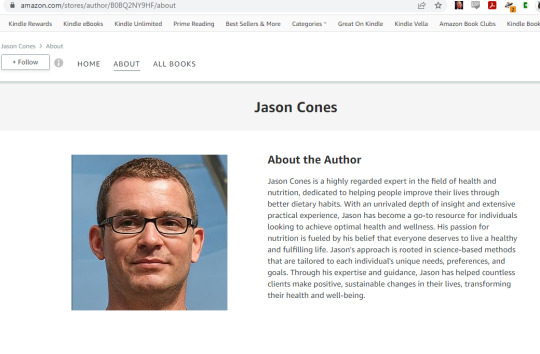
--This is a BIG one: Who's the author? Check their bio. In the above image you'll see that "Jason Cones", the author of "The Wild Edible Plants Forager's Handbook: A Beginner's Guide to Safe Foraging, Including How to Identify Edible Plants, Learn About Their Medicinal Properties, and Prepare Them for Cooking", has a very generic picture and bio that has pretty obviously been generated by AI. If you search for him online, the only page for an author named Jason Cones is the Amazon author page--no website, no social media, no interviews, nada. Even a brand new author will at least have something other than their Amazon page, and they'll mention experience, credentials, other biographical info.
--Look at the author's other books. Magaret seems to focus on cookbooks of very specific sorts, but again they've all come out in a very short time. They also tend to often be on really super-specific niche subjects--this, again, is not a red flag in and of itself, but it's a common pattern with AI "authors". Jason Cones, on the other hand, has written over two dozen books not just about foraging but anger management techniques, acupressure, and weed gummies, and all of his titles have come out since last December.

--If all the books have the same cover but slight differences in title, it's also a big red flag. There are reputable publishers of regional foraging guides like Timber Press, but their books are written by multiple authors and have come out over a long stretch of years (plus they're a well-known publisher with a solid track record, online presence, etc.) Also notice the typos in the title and subtitle; everyone says "Mushroom Foraging", not "Mushrooms Foraging", and "Keep Track Your Mushroom Sightings" is missing "of".

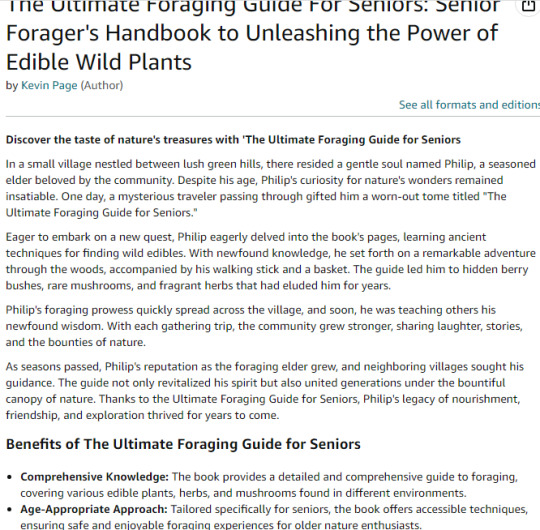
--Compare the descriptions of multiples of these new books and you start seeing patterns. If you look at the images above, you'll notice that both Lorna K. Thompson's "Foraging Recipe Cookbook" and Kevin Page's "The Ultimate Foraging Guide for Seniors" have a very similar formulaic description. They start with a brief story about a person in a town or village who discovers some foraging secrets and then transforms his life, and then a list of things you're supposedly going to find in this seemingly miraculous book. This basically reads like "Hey, ChatGPT, tell me a story of a person who improved their life with foraging in two hundred words or less!" Also, the ends got cut off of my screen shot, but they both end with "GET YOUR COPY TODAY!"
I have not purchased any of these books to verify how awful the content is, but what little content I can see in the previews is uniformly formulaic and, again, reads like someone asked an AI to write content on a topic with some specific keywords thrown in. Needless to say, I do NOT recommend any of these books.
Also, I feel really bad for any actual authors who released their books in the past few months. They're likely getting drowned out by this AI junk, though hopefully they're getting enough attention for their work through their publishers, social media, etc. to get some sales. Support your real-life authors, and boycott AI!
Finally, PLEASE reblog this! It's really, really important that people know what to look for, and the more posts we have floating around with this info, the less likely it is someone's going to get poisoned by following what these books have to say.
#fischotterkunst#AI#Ai sucks#chatgpt#foraging#mushroom foraging#mushroom hunting#wild foods#nature#mushrooms#plants#fungus#fungi#books#self publishing#Amazon#PSA#poisonous mushrooms#poisonous plants
554 notes
·
View notes
Text
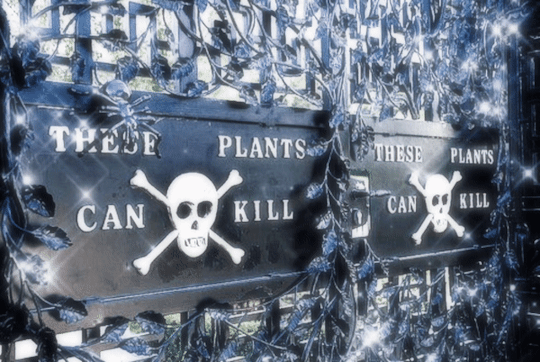
Alnwick Poison Garden, England☠️🌿
127 notes
·
View notes
Text


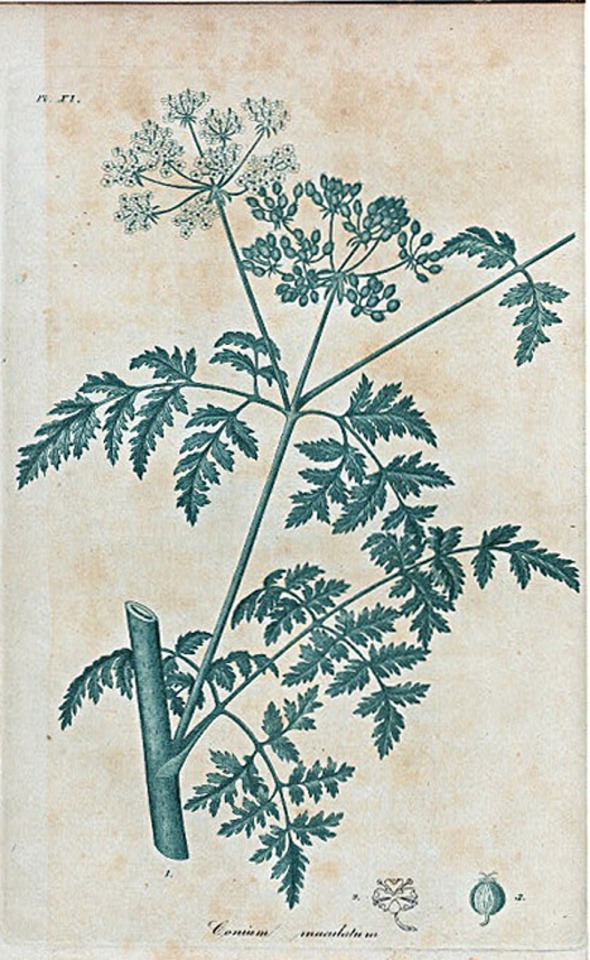

Coloured engravings of the poisonous plants datura, henbane, and hemlock from American Medical Botany: Being a Collection of the Native Medicinal Plants of the United States by Jacob Bigelow, 1817.
Source: New York Public Library
#banefolk#bane folk#poisonous plants#poison path#baneful plants#baneful herbs#henbane#hyoscyamus niger#datura#datura stramonium#hemlock#poison hemlock#conium maculatum#antique books#antiquarian books#pharmacopoeia#materia medica#botany
102 notes
·
View notes
Text
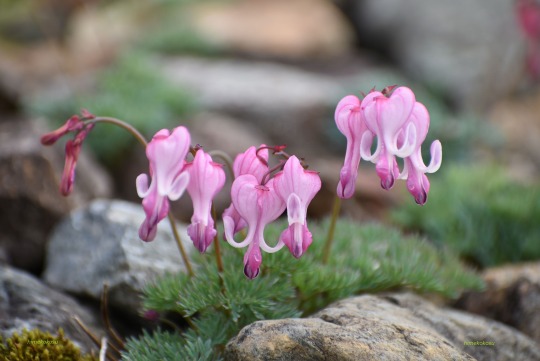
Dicentra peregrina
1K notes
·
View notes
Text

Denizens Of The Darkness
Watercolor On Black Paper
2022, 22"x 30"
Monkshood, Aconite, Aconitum
#art#nature#flowers#plants#artwork#artists on tumblr#watercolor#floral#painting#minimalism#artblr#botany#artist#creatrs#purple#aconitum#aconite#monkshood#poisonous plants#wolfsbane#wolf's bane#botanical#plant#plantblr#witchy#garden witch#goth cottagecore#contemporary art#cottagecore
318 notes
·
View notes